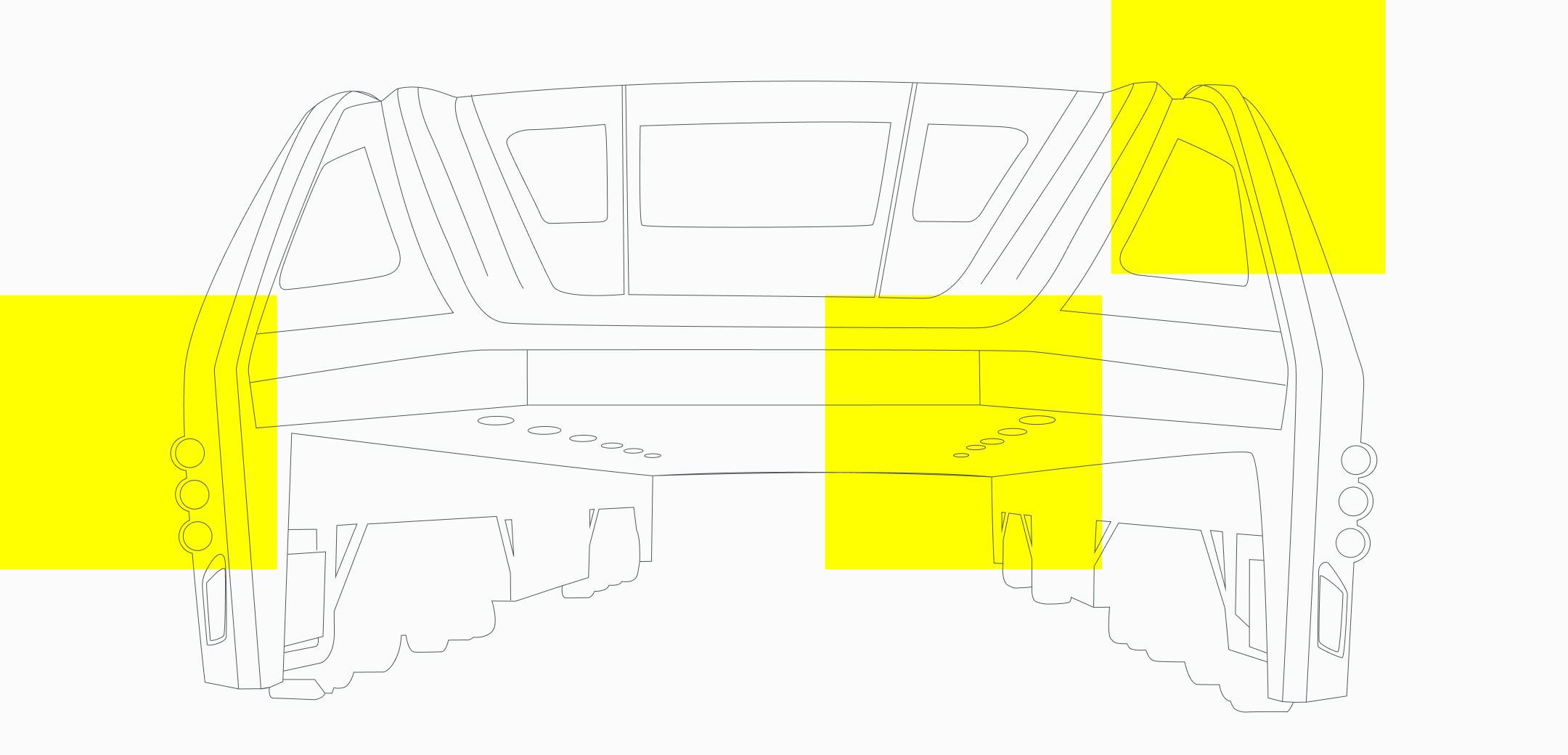Part of our transportation and logistics thought leadership series
 By: Tria Georgakis & Andrea Nalupa
By: Tria Georgakis & Andrea Nalupa
A look into how siloed technology implementations are causing digital transformation initiatives to meltdown within transportation and logistics companies
Fragmented IT systems are ruining operations and the customer experience
With the rise of novel and innovative digital solutions that serve ingenious purposes for many companies in the mobility industry, more and more businesses are investing in different, largely individual technologies. From integrating client-facing applications and internal document management platforms to employing operation monitoring systems, companies in the vertical are dealing with a great deal of change. Large enterprises such as Uber, Waymo, and Tesla, for example, have been experimenting with self-driving vehicles, global company GLS is continuously pushing for user and employee experience innovation through apps, and international giants UPS and DHL are looking into automating warehousing and distribution activities in the past three years [1]. Progressive and exciting as those sound, however, for less experienced industry players, similar initiatives are starting to clash with one another or break down due to a lack of supporting digital systems; bringing bad news to employees and consumers across the market.
One such case is that of the company manufacturing the “straddling bus” – an elevated, electricity-powered public bus roughly the size of three to four regular units combined. Though a truly innovative solution to skipping the traffic jam and creating more sustainable transport, the straddling bus is among the best examples of isolated transport solutions that went into decline.

model sketch of the “straddle bus”
First conceived in the year 2000 and road tested in 2016, the straddle bus development came to a full stop in July 2017. Despite capturing the attention of many locals and gaining traction within the local market, this implementation ultimately collapsed and led to large-scale loss. This is because the bus was made only by itself – without a proper support infrastructure or a streamlined strategy linking it with other technologies tackling vehicle maintenance, rapid ticketing (especially with the amount of people able to go on and off the bus within minutes), a clear map of charging stations (since charging has to be done in each station because the size of the vehicle translates to large amounts of energy consumption), and other traffic systems. And consequent to this lack of coordination, an estimated cost of 4.5 million USD per unit went straight to the drain [2].
How does this affect the business & customers?
Cases like that of the elevated bus can impact stakeholders in the transportation and logistics market negatively in three major ways. Below, we delve into how this once-thought negligible flaw in the system effectively devastates multiple aspects of delivery across the value chain.
Plummeting operational efficiency
With the emergence of postmodern expectations on the quality of digital solutions, transport and cargo companies continue to seek solutions enabling zero latency. But a considerable amount are faced with extreme backlash as their isolated systems slow down various procedures and operations.
While the advancement in realtime technologies and boosting productivity rates are being prioritised by companies even outside of the vertical, some companies are unable to apprehend and continue to ignore the importance of streamlining and harmonising their IT systems.
Creating a sales management system one month, building a separate marketing platform the next, and developing isolated vehicle monitoring and order tracking systems quarters after in an effort to address issues and improve performance, for example, all seem to be done with good intention. But without any effort to connect them, such unlinked, under-examined intentions manifest themselves as slow data transfers, missing records lost during such transfers, delayed rollouts, incohesive business goals, and only a partial or even inaccurate understanding of the business [3]. Only by organising the connection between these structures can interoperability be achieved.
Compromising passenger and system safety
As software becomes a more integral part of transportation systems – taking nearly complete charge of self-driving vehicles, dictating freight and delivery protocols, and ensuring proper care, maintenance, and compliance of vehicle conditions, the stakes in ensuring safety within digital executions are higher than ever. And companies are doing what they can – setting up thorough safety procedures, protective systems, and whatnot – to deliver experiences, processes, and services with minimal to zero risks [3]. However, some seem to overlook one thing – how knowledge and workflow consistency is just as essential as blocking out hackers and computing probabilities.
Even in the absence of a security breach or physiological risks, digital solutions can fail because of incompatible codes that mature into bugs, because of delayed information from one or multiple loosely integrated data sources, because of a blindspot or disconnection with neglected documentation, or another similar interoperability issue. These mishaps are not to be taken lightly – possibly resulting in injury or loss of life. That being said, paying attention to system and data cohesion can spare lives and therefore should be a priority.
Creating unsatisfactory consumer experiences
With fragmented systems also come disorganised, scattered consumer experiences. Apart from greater possibilities of incomplete or inaccurate order fulfillment due to information loss, delay, or mistranslation between systems during transactions, fragmentation can also cause businesses to lose patrons quite literally.
If vehicle or parcel tracking is disconnected from order forms, inventory, payments, and feedback, and has to be done or observed from different sites or platforms, consumers can easily be lost navigating all such processes and deterred by the tediousness – bringing the higher likelihood of a cancellation or negative feedback. After all, with the competitive market producing increasingly convenient and consolidated services and consumer experiences, why would anyone choose platforms with tiresome transactions?
Why does it happen?
Despite the many complications brought about by fragmented IT systems, we offer a simple explanation of its single, most common cause – shortsightedness. Because of a range of reasons – some valid – like high pressure consumer expectations and demands, abrupt changes in regulation compliance, or even the gunpoint threat of fading away into irrelevance, many businesses jump into developing singular solutions in an effort to deliver fast or rather rushed results. Because of this, they are barely able to invest time to look at their long-term goals and vision.
In a hurried venture to change things up, many digital systems are primarily built or integrated without any thought or consideration of other existing or potential solutions. This translates to restricted, isolated, and likely inflexible infrastructures that make it difficult or even impossible to blend it in with or integrate into a solid, streamlined strategy. Thus, fragmentation.
What can you do to fix it?
Although it can become laborious trying to correct fragmentation, it is possible. And here are some steps you can take to get started.
Devise or revise a holistic strategy/plan
If you have only started planning or are already dealing with your siloed initiatives, the first step that should be in order is organisation. Figure out where you are and what direction you want to go with your business, and only then fill in the gap. This makes for a plan that is considerate of your current position and your vision for the future. Additionally, make brainstorming a linking activity – connecting ideas together and seeing how they can work in harmony instead of thinking of them as random ideas that are supposed to compete with each other. This powerful practice maps out and simplifies what a plan with continuity through inter- and intra-connectivity looks like.
Consider future additions & collaborations
Keeping in mind the rapid speed of technological advancement, it is also important to forecast and prepare for future IT and industry dynamic revolutions that can impact the mobility sector. With numerous fast-growing trends such as robotics employment for rudimentary tasks and global cross-point cargo alliances that address inflating demands for international shipment, keeping a regularly updated and open strategy will help your company exploit trends and similar developments faster and easier. Not to mention how it also makes your initiatives more easily adaptable to swiftly changing customer expectations and demands.
Ensure compatibility & compliance
To complement efforts towards adaptability, going with flexible tech stacks and adhering to specific industry standards and established IS guidelines are also crucial in rectifying fragmentation. The more compatibly coded and the better regulated your implementations are, the less complicated it will be to integrate more systems and developments in the future.
To give you a headstart, some guidelines to keep in mind are the global Standards on Software, Carnegie–Mellon’s Software Engineering Institute Capability Maturity Model, ISO9000-3, and the Project Management Institute’s Guide to the Project Management Body of Knowledge [3].
Conclusion
In hindsight, the implications of fragmentation are a testament to why spontaneous and sporadic are bad words when dealing with digital transformation. Evidently, companies who tread the rushed path in desperation are greeted with many non-compensable complications. That being said, only by staying thorough and committed can the continuity, success and sustainability of digital innovation be achieved.
Learn more about technology in the transportation and logistics vertical here
Endnotes
[1] Transport Topics News, “Investment in Technology, Innovation Is Changing Business of Logistics”, 2018
[2] New Scientist, “7 crazy transport systems that didn’t go the distance”, 2017
[3] Wisconsin Department of Transportation, “Information Technology in Transportation, Key Issues and a Look Forward”, n.d.
Other references:
Dept. of Global Studies & Geography, Hofstra University, “Integrated Transport Systems: From Fragmentation to Coordination”, 2021
Aptude, “Why Do Transportation Management Systems Fail?”, 2021
